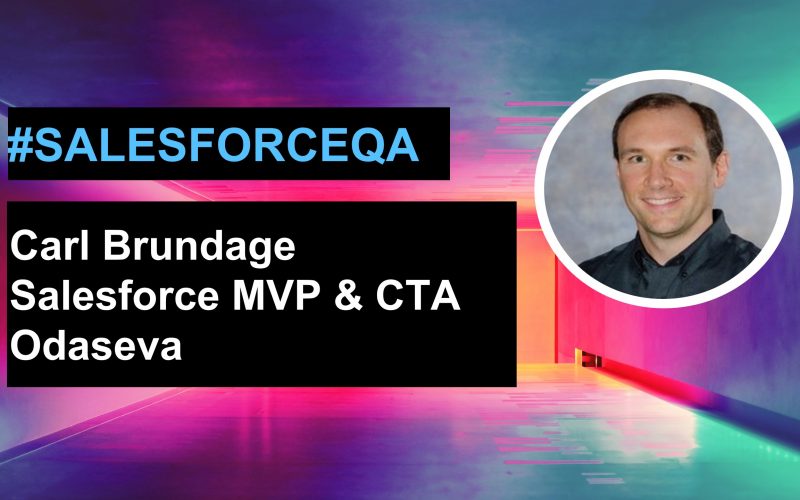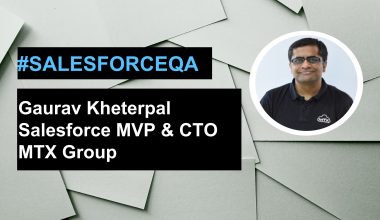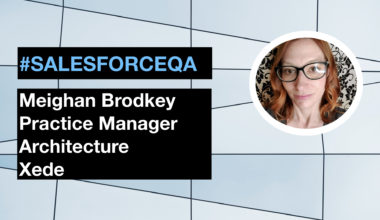In our most recent #SalesforceQA interview, we caught up with Master Architect at Odaseva and Salesforce MVP, Carl Brundage. Carl offers his advice for others looking to succeed as a CTA and discusses what others hoping to become a Salesforce MVP should consider.
Carl also mentions the key skills he looks for when hiring new Salesforce talent into the team.
Salesforce Republic (SR): To start, could you talk us through your career in the ecosystem and what inspired you to pursue a career in Salesforce?
Carl Brundage (CB): Although I had my first Salesforce org in 2009, I didn’t start working with Salesforce until the summer of 2014. I had previously spent 10 years building, delivering and supporting mobile CRM solutions for pharmaceutical/life science companies. While the work was interesting, our platform was proprietary. The skills I gained were not widely transferable beyond the company or its customers.
When a former colleague contacted me about a role building a commerce app for Salesforce at a partner, I was excited for the opportunity to work with Salesforce. I was quickly immersed in all things Salesforce and was leading a highly skilled, highly certified team. The experiences I had working with both the people and the technology were exactly what I was looking for and started me on the path to where I am today.
SR: What are your top five tips of advice for others to succeed as a Technical Architect?
CB: As odd as it may sound, the first tip is to focus beyond the technical. The people, process, and leadership, drive success with the technology. Actively plan for the change management necessary to ensure adoption. Consider the planning and processes needed to both build and operate the solution. Building the most technically brilliant solution ever doesn’t achieve success if it doesn’t deliver business value.
Similarly, success is a team sport. When I was younger, I focused mostly on my direct area. Other teams’ struggles on the project were their problem. However, the project succeeds or fails together. Nobody says what a complex disaster of an implementation that was, but what a great architect we had. I am much more likely to speak up and lend a hand when others need help.
Next, it’s important to listen and learn. There are times when the CTA designation can be intimidating, and folks may think they don’t have anything to share. I am always interested in hearing another perspectives or ways to broaden my thinking. I’ve spent quite a bit of time as an instructor and the questions raised by students have helped to broaden my knowledge.
Likewise, you must show respect when interacting with others. Sometimes certain roles or people may not have a lot of positional authority on the project. However, what these folks know can make or break your deliverable. Finding ways to include their input is a valuable skill. Asking leading questions and truly listening to the response is important. You can gain insight into the complexity based on what is said. Remember, always and never are easy to implement. It’s the sometimes that drives complexity, as all the conditions must be accounted for.
Finally, every company has positive and negative aspects that you have to deal with. Completing expense reports at a big company can be full of bureaucracy with rules, regulations and multiple levels of approvals. It may take months until you are reimbursed. A small company may have more ad-hoc processes and items may get lost. It may take months until you are reimbursed. Happiness in your career is determining what stuff you deal with best and aligning to that type of organization.
SR: In your experience, what advice would you give to those interviewing for an architect role in Salesforce?
CB: Looking across the candidates that I have interviewed, there’s one characteristic that separates top candidates from the rest. Candidates that are hired and succeed as architects are able to project themselves into the role during the interview. They are able to build on their experiences and make logical assumptions about the challenges the company faces. Furthermore, they offer potential solutions to those challenges based on what they know.
For example, if I describe the architect role as participating in the sales process, strong candidates will share their past experience and hypothesis about our situation. They may share that they’ve previously had a shared delivery and sales role and would imagine we face challenges in balancing the need to respond to RFPs and manage project go-lives. Then the candidate will share a potential solution, such as building a repository of common answers to let the sales team take the first pass at completing an RFP response.
With these type of interview discussions, it’s very easy to envision the person in the role and contributing to your company’s success. This type of skill is exactly what good architects do when working with clients. Furthermore, this advice isn’t limited to architects and applies to any role.
SR: As a result of the pandemic have there been any changes in the way Odaseva are sourcing and hiring Salesforce talent?
CB: Even before the pandemic, Odaseva was a global company with a significant remote workforce. We were well positioned to deliver our data success platform to customers with virtually no disruption. To help fuel our growth, we continually turn to our network to fill open positions. Given the disruption the pandemic has caused, there are a lot of great folks out there with Salesforce experience who are looking for new roles.
SR: What key skills do you look for when hiring Salesforce talent into your team?
CB: Communication skills are at the top of the list. I will drill into a specific aspect that I look for during interviews. It’s important that candidates can precisely and concisely communicate in the language that resonates with the audience.
First, precise communication is important to get key messages across. Then, you need to do it in the shortest way possible. We probably all know folks who take too long to get to the point. When that happens, you start to drift – check your email, read the news or read articles like this. Finally, you need to communicate how the audience wants to receive it, as it may be a business, technical or mixed audience. Remember communication isn’t what you say, it’s what they take away.
The second skill is around taking ownership and driving to completion. It’s way too easy to give the impression of being busy without accomplishing much. High performers will take ownership of what they are working on, from small items to big projects. In addition, they are the ones that keep projects moving forward. How many meetings have you been in that just end without a set of next steps or outcomes? Those that drive to completion are always asking what the takeaways should be. As an architect, I don’t know everything, but I will find out and get back to you.
SR: You are also a Salesforce MVP, what do you think others should consider if they are hoping to achieve this accolade?
CB: Being an MVP is something that happens, not something that you work to achieve. The contributions I made to the community before being named an MVP were not done to achieve that designation. I believed there was information I could share to help others on their journey. Likewise, if I stopped being an MVP today my activities would continue. While the MVP designation helps me reach a wider audience, it’s not the reason I contribute.
SR: Finally, what is the best piece of advice you have received throughout your career?
CB: I’ve learned to spend time and energy looking for alignment and consistency. Rarely is there good or bad, rather a high or low degree of alignment. For example, you may look to hire employees with less experience. As long as you are structured with a strong training, mentoring and development program that has a lot of support, you have a workable model. However, if you need people to immediately jump into complex projects with limited support, it will be a disaster. I am a big fan of confronting reality to fully understand what decisions mean and avoid surprises.
If you’re a Salesforce professional and would like to be involved in our Q&A series, please get in touch today!


